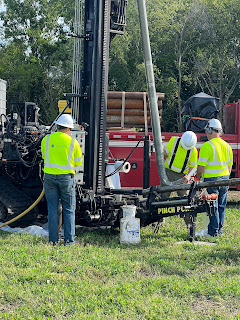Midwest GeoSciences Group will be a featured exhibitor at the Annual AGU Meeting in Chicago, December 11-16, 2022.
With the recent release of the new SOIL CLASSIFICATION EXAM KIT coupled with an AGU presentation summarizing the Environmental Sequence Stratrigraphy of a complex site in Illinois, AGU has chosen Midwest GeoSciences Group as a featured exhibitor.
Thank you to those at AGU for your kind gesture.
ABSRACT
Unraveling the Complexities of a Glacial Sequence at a site in Tazewell County, Illinois for a Hydrogeologic Project:
Stepwise-Procedures for Applying Environmental Sequence Stratigraphy.
KELLEHER, Daniel, L., Midwest GeoSciences Group, 1950 Greyhound Pass, Suite 18, Carmel IN, 46033; dan@midwestgeo.com; KEMMIS, Tim, J., Midwest GeoSciences Group; tim@midwestgeo.com;
Understanding the past depositional processes was the key factor for unraveling the complexities during a hydrogeologic project in Tazewell, County, Illinois. The sequence of sediments have multiple origins ranging from stream deposits, subglacial tills to thick intervals of proglacial outwash from Wisconsinan, Illinoian, and pre-Illinoian glacial periods.
Ten years of drilling from past projects yielded varying hypotheses for both ground water movement and the glacial sedimentary sequence. Each progressive project approached the subsurface differently as reflected in the boring logs, the geologic cross sections, and the resulting potentiometric surface maps and vertical flow nets.
Eventually, it was confirmed that applying fundamental depositional principles and secondary weathering observations proved important because it provided the context for understanding the variability and uniformity in soils, physical properties, and groundwater conditions that were essential for confident ground water monitoring and engineering design.
Although the process for defining and mapping stratigraphy is a basic premise of geologic principles, the United States Environmental Protection Agency published a 2017 report about the need for understanding basic subsurface characterization titled Environmental Sequence Stratigraphy. The subsurface characterization work in Tazewell County followed the three published phases for defining and mapping stratigraphy, but the process unraveled the complex stratigraphic sequence derived from different depositional environments coupled with yielding a meaningful geologic framework that has proved valuable to the County and subsequent regional mapping by various agencies.





.jpg)






.jpeg)









